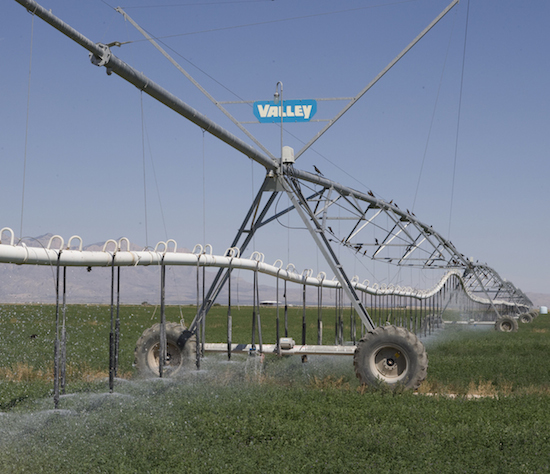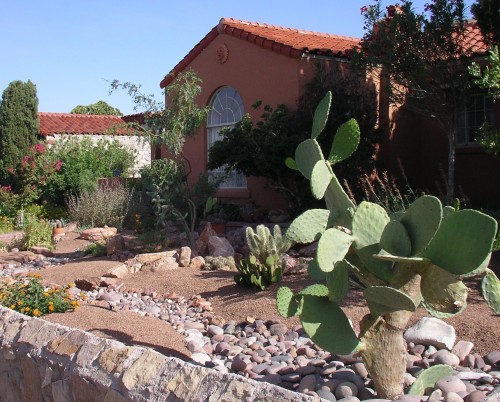How Does Water Conservation Work?
Given the reality of population growth in Texas, it is important to manage our limited water supplies efficiently. Water supplies in Texas are already under pressure from severe droughts and agriculture, yet the state has issued more water rights than would be available in dry years, which threatens the flow of rivers and the levels of aquifers. Proper planning can reduce the need for additional unsustainable, expensive sources like reservoirs and long distance pipelines. Texas needs to conserve water not only for municipal and agricultural use but to preserve aquatic habitats throughout the state including Hill Country springs and coastal estuaries. Water conservation takes many forms from mitigating infrastructure leaks to reusing wastewater for lawn irrigation. When it comes to water conservation, the goal is to reduce use. If we reduce day-to-day use, there will be more water in our aquifers during periods of drought, more water in our rivers for wildlife, more water to support a healthy coastal fishing industry, and less need to build inefficient environmentally-damaging reservoirs.

Who Are the Big Water Users in Texas?
The Texas State Water Plan lays out the top three water user categories: Municipal, Agricultural, and Industrial.
Cities account for one-quarter of Texas’ water use, and demand is expected to increase as populations grow. Agriculture is the largest user of water but it also has the greatest potential for savings through advancements in technology, such as precision sprinklers and automated control systems. However, the high expense of these applications can deter some farmers from implementing them despite the long term water savings. Find more on the TWDB website. Industrial water use accounts for around 10% of Texas’ water use, yet there is a huge potential to reduce the water footprint of these manufacturers. Similar to the technological advancements in the agricultural industry, there are a number of water efficient applications that can be retrofitted in these factories which rely on water in each step of the manufacturing process. Read more about some best management practices at the Alliance for Water Efficiency’s resource Library.
Reduce Your Use
Water conservation is not universal throughout Texas. While we should all strive to conserve water year round, water conservation programs vary considerably throughout the state. The Texas Living Water Project lays out six common sense practices that cities and their utilities should implement.
- Fair water rate structures
Implement a tiered rate structure that offers lower rates for those who use water efficiently and higher rates for customers with excessive water use. The proceeds collected should go toward funding water conservation programs. Read more about Water Rate Structures and Revenue Stability. - Establish water conservation goals
Many cities in Texas are required to have water conservation plans, yet many cities set goals that are easily achievable and don’t motivate customers to be water conscious. - Implement water fixture replacement programs
New high-efficiency low-flow technology has made many of our common household fixtures like faucets and showerheads use less water. Replacing these fixtures, including toilets, saves more than 12,000 gallons annually. Utilities should look at practical ways to get their customers to make the switch. - Fund water conservation efforts
Major water utilities in Texas should have a department for water conservation and fund it adequately. - Adopt outdoor watering ordinances
Outdoor landscape watering is one of the largest municipal uses of water. Cities should set restrictions that allow watering of the lawn no more than once a week. In some cities they even issue rebates for homeowners that xeriscape (landscaping with drought resistant species). - Educate the public
It is important to educate the public about the ways they can contribute to water conservation goals. Utilities should invest in education programs, like SAWS does with their media campaigns, educational events, and home conservation consultations. Their reported spending on this effort was an average of $1 per person, but these programs saved $4-7 per person in water utility expenditures.

How to Reduce Outdoor Water Use?
Outdoor watering in urban areas is one of the largest water use categories. Clean drinking water is used to irrigate lawns and keep grass green during the hot summer months. Sprayed Away, a 2010 report done by Texas Living Waters shows that summer water use is often 50-60% higher than winter water use. In addition, the Texas Water Development Board found that around half of the water volume sprayed on lawns was lost through street runoff and evaporation. These studies show that a change in our lawn watering behavior is necessary. Collectively, Texans could save millions of gallons of water by reducing the water we dedicate to our lawns.
Here are some ways Texans can save water:
- Improve automatic irrigation systems
Homes with in ground sprinkler systems use about 35% more water than those without. These systems are either designed or installed in an inefficient manner causing water to run off into the street. Simple upgrades can be made by watering after sunset and adding a rain sensor to immobilize the system when it has already rained. - Redesign the lawn
The amount of water used for lawn watering can be almost eliminated by planting drought resistant native grasses and plants. This practice, known as xeriscaping, can have an impact lasting decades. - Landscape and Water rebates
There are a number of applications and methods out there that can all aid in the water conservation effort, but more often than not, the public are in dark about how they can take part. Water utilities need to actively inform their customers about how to decrease their water use throughout the household, both indoors and out. In addition, homeowners should be informed about potential rebates that are offered for applications such as low flow toilets, rainwater catchment system, or xeriscaping. Educational programs should be practical and easy for consumers to understand the benefits and steps associated with water conservation. In cities like Pflugerville and San Antonio, they offer rebates to homeowners and businesses who replace common water reliant species like St. Augustine with native drought resistant species. - Rainwater harvesting
The collection of rainwater is one of the most underutilized methods of water conservation. The amount of rainwater that runs off of a standard roof during a 1-inch rainstorm is about 600 gallons. To calculate, convert the footprint dimension of your roof from feet to inches. Multiply roof dimensions by inches of rainfall, then divide by 231 to get gallons (1 gallon = 231 cubic inches). By installing some sort of rainwater catchment system, a household can use that water to irrigate plants in the future instead of tapping into the municipal source. Some cities even offer rebates for having rain collection barrels. - Watering ordinances
During times of drought, it is common for Texas cities to implement water restrictions on households. Common restrictions are once-a-week watering and only watering at night. While these restrictions are more prevalent during summer months, there still needs to be a year round effort to reinforce proactive conservation behavior.
Water Conservation and Drought Preparation
Cities that implement water conservation efforts year round have an easier time dealing with restrictions during severe droughts, and have more water reserves on hand. The City of Austin actively promotes water conservation year round and is setting a new precedent for water conservation throughout Texas. The City of Austin Water Utility requires both households and businesses to abide by water conservation restrictions and issues penalties for water violations.